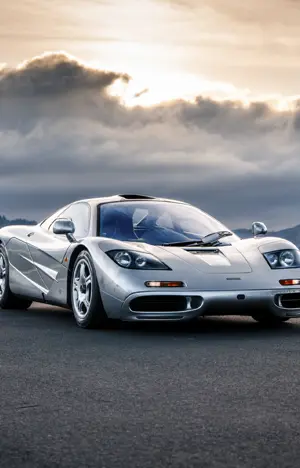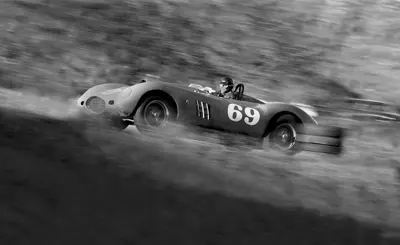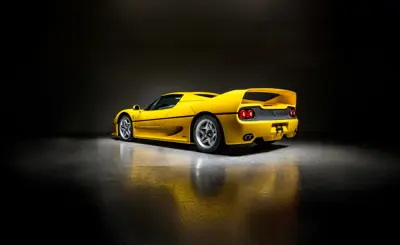From hosting stars of the silver screen to thunderous factory hot rods like the Ferrari 375 Plus, Paramount Ranch was a short-lived yet memorable addition to the Southern California race scene in the fifties.
The Mercedes-Benz 300 SL of Lek von Kaesborg lines up alongside the Porsche 356 Speedster of Lew Bracker.
Image courtesy of Allen R. Kuhn
In the 1950s the American sports car scene was exploding. Rich men were importing the latest sports-racing Ferraris, Jaguars, and Porsches to race against the less wealthy, who tried to beat them with ingenious backyard specials that used American components and V-8 horsepower. On the East Coast they ran on road circuits like Watkins Glen and Lime Rock, while in the West makeshift tracks were set up on airfields like Palm Springs and around the disused army base at Torrey Pines.
Real road racing came to California on the narrow, tree-lined roads around the millionaires’ mansions on the Monterey Peninsula at Pebble Beach. But after a fatal accident in 1956, which killed Ferrari driver Ernie McAfee, it was used no more. All that remained was its sideshow, lining up club members’ polished cars on the nearby golf course to decide who had the prettiest. It grew into the world’s most important concours d’elegance.
Meanwhile in the Santa Monica mountains, 30 miles from Hollywood, the state’s first purpose-built road race circuit was emerging. Paramount Ranch had been bought in 1927 by the eponymous film company as a 2,700-acre location on which to build sets for Westerns, gangster movies, and coy musicals. It was sold in 1943 and passed through various owners until a consortium of investors decided to take advantage of the burgeoning popularity of sports car racing to create a motorsports facility. To design it they commissioned Dick van Laanen, an official at the Californian Sports Car Club, and he called on one of the most successful West Coast racers of the day, British ex-pat Ken Miles, to help him come up with the layout.

On a limited budget they created a very challenging circuit which wound up and down a hilly, dusty bowl. Brushwood was cleared to lay a narrow roadway, and a few straw bales and marker cones defined the track.
Running anticlockwise, it crammed 11 corners into two undulating miles, ranging from a tight hairpin to several fast sweepers. The fastest corner, Turn Four, had a stout oak tree at its apex, and Turn Five, a tight left, edged a 10-foot drop into a lake. A remarkable feature was the bridge, where a twisting section looped round to run underneath the end of the finishing straight, making the track into a figure-of-eight.
In August 1956 the track was ready for its first meeting, and a large crowd, standing on the dusty banks unprotected from the cars, watched Richie Ginther (Porsche Spyder) and Harrison Evans (Ferrari 750 Monza) win the main races. Many drivers, raised on airfield circuits with no natural hazards, found the tight track difficult, and spins and off-course excursions proliferated.
In November, USAC ran a 250-mile race for stock cars which attracted top names of the series like Sam Hanks, Tony Bettenhausen, and Troy Ruttman, although the big cars proved a handful around the tight track. The following year there were three more meetings run by the CSCC in March, June, and December, as well as another USAC sedan race.
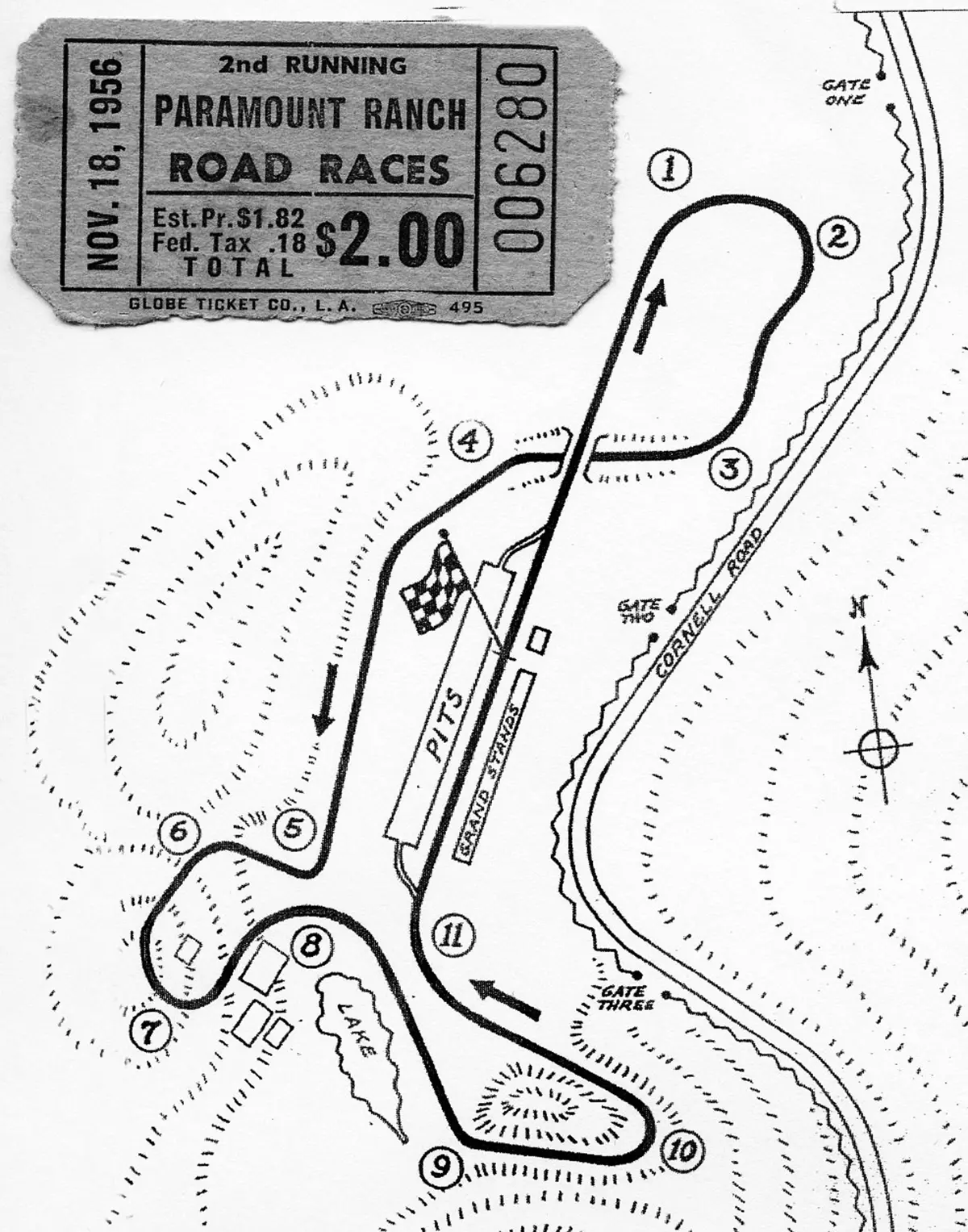
The December 1957 meeting was set to be the biggest and best yet. Over 170 entries contested 14 races over the weekend, including Jaguar D-Types, Ferraris, Porsches, Maseratis, Mercedes 300 SLs, and homely but very rapid local confections like Max Balchowsky’s Old Yeller. But the car that took every eye was the magnificent red 4.9-litre Ferrari 375 Plus belonging to millionaire builder Frank Arciero.
Having arrived from his native Italy aged 14 without a cent and dug ditches in order to eat, Arciero had ridden the Californian building boom and become hugely rich, and able to indulge his passion for Ferraris. To drive the 375 Plus at Paramount Ranch he hired the brilliant young Dan Gurney, soon to go on to a glittering career in Formula 1 and endurance racing, and later to become the first American to win a Grand Prix in a car of his own making.
The meeting started badly in Saturday morning practice, when Hugh Woods lost control of his Corvette at the end of the main straight. A guardrail had been installed around the outside of Turn One, but after an incident at the June meeting it had been shortened. Woods’ Corvette hit the end of the guardrail and he was gravely injured, losing a leg.
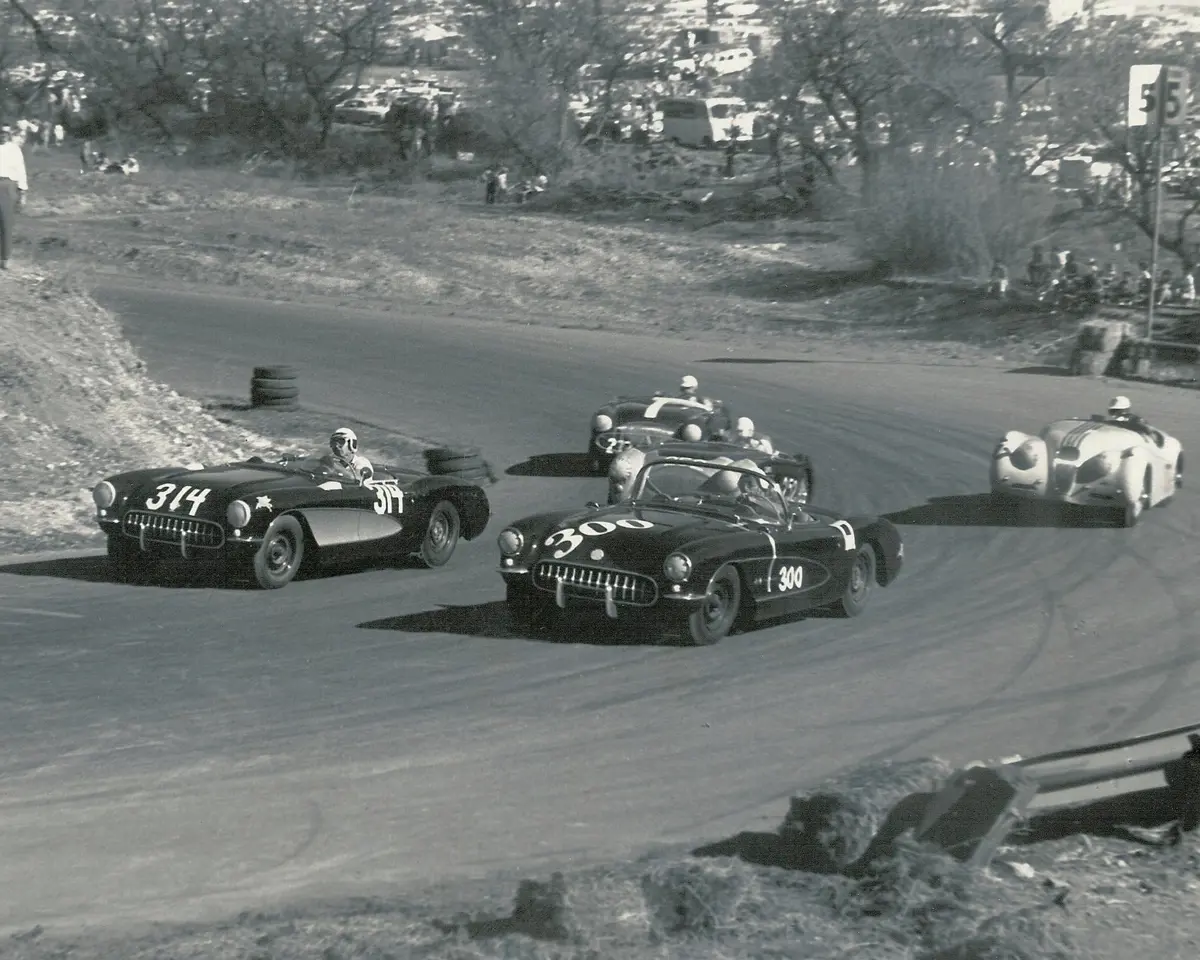
The rest of Saturday consisted of eight 10-lappers, as a taster for the big events the next day. In the big-capacity production car race, George Sherrerd missed a gear changing down at the end of the main straight. The car went out of control and cannoned into the projecting end of the same guardrail that Woods had hit. He was killed instantly. The racing carried on, and the crowd got its first glimpse of the big Ferrari 375 Plus. Gurney had no difficulty in winning from Bob Oker’s Aston Martin DB3S and Jerry Austin’s D-Type.
The two bad accidents of Saturday cast a pall over Sunday’s races, but they went ahead with wins for Jerry Austin’s Corvette, Ronnie Bucknum’s Porsche, Ken Miles’ Porsche Spyder, and in the Ladies’ Race, Linda Scott’s AC Ace-Bristol.
So to the final race of the weekend, an hour-long thrash around Paramount’s hilly twists and turns. Once again the big Ferrari dominated, its big V-12 booming under the bridge and revving musically as Gurney went down the gears for the hairpin. Towards the end he eased off, but still led Oker’s Aston home by 18 seconds, with the D-Type 3rd again and the rest of the field a lap or more behind.
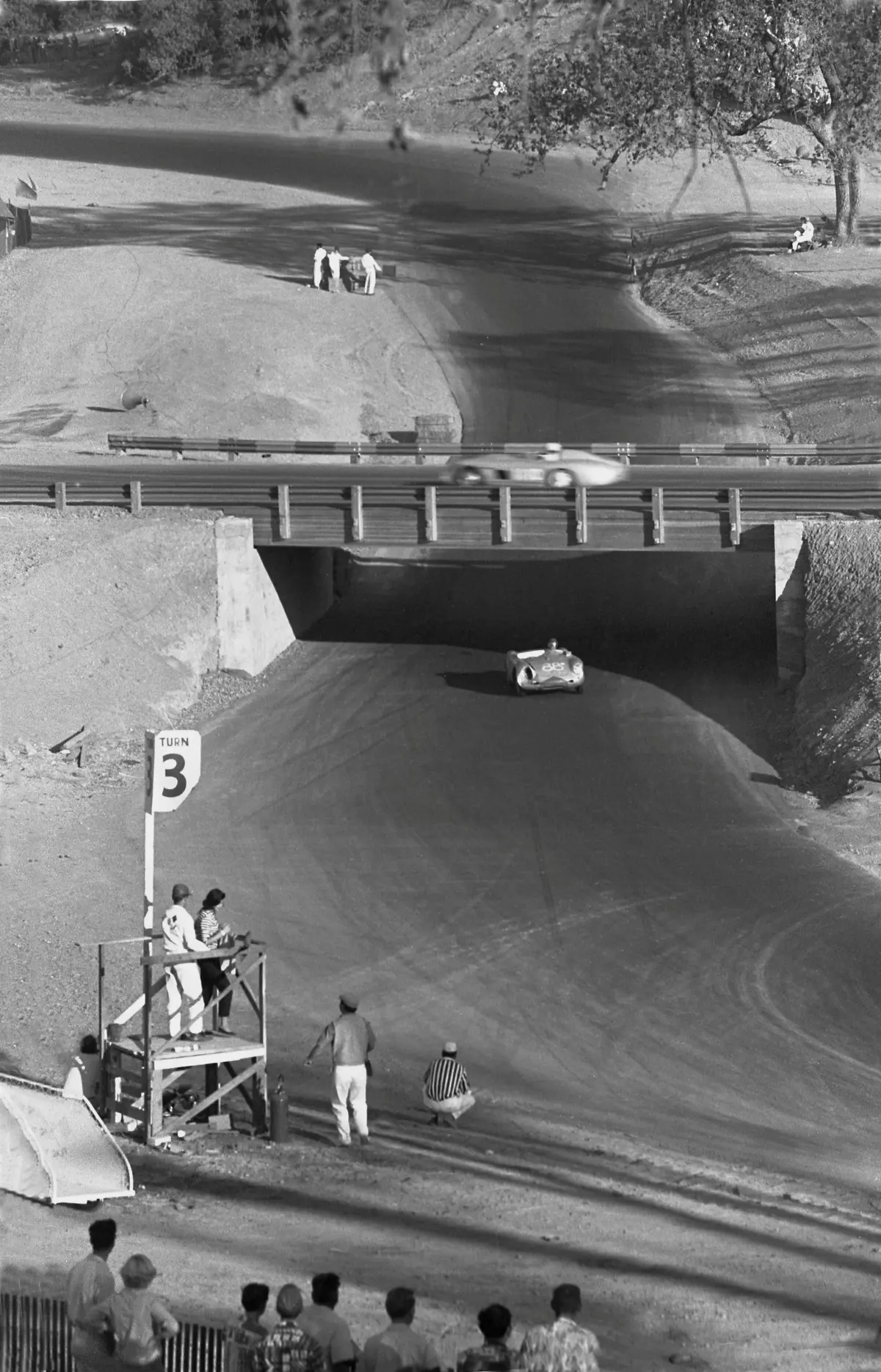
The chequered flag had already waved for Gurney when the Frazer-Nash Le Mans Replica of Jim Firestone got out of shape in the downhill right at Turn Two. The car dug into the dust and cartwheeled, throwing out Firestone and then fatally crushing him.
After that it was all over. The CSCC had no funds to make the track safer, and after less than two years, the Paramount Ranch racetrack was no more. Today the whole area is a National Park, enjoyed by hikers and wildlife buffs; but overgrown with brushwood, traces of the old circuit can still be seen, silent and poignant in the dust.




